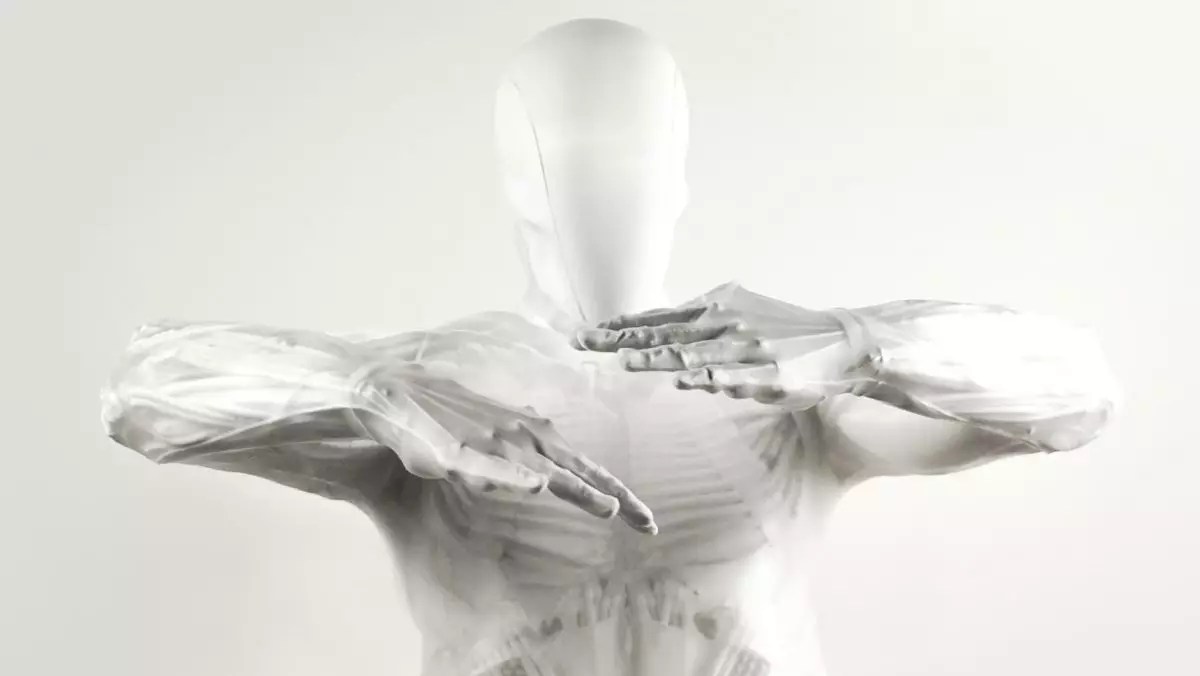The rapid advancement of robotics technology has transformed the landscape of artificial intelligence and automation. Among the myriad innovations, the emergence of musculoskeletal androids raises both excitement and trepidation. A recent showcase of one such creation, the “Protoclone,” crafted by a company ominously named Clone, has generated a wave of unsettling reactions. This bipedal android, designed to closely mimic human anatomy, inverts the usual fascination with robotics, beckoning instead a visceral fear and skepticism. With no face, this entity, suspended from wires and writhing in what can be perceived as a desperate struggle for freedom, amplifies concerns about the future of humanoid machines.
One cannot help but notice the jarring juxtaposition presented by the Clone’s android. Unlike its metallic counterparts, this creation is forged from a “musculoskeletal” framework, complete with joints and muscles. At first glance, the aim of creating softer and more human-like robots appears sound, promising less industrial and more affectionate companionship. Yet, this pursuit conjures images of something far more existentially disturbing—a literal reflection of humanity that lacks the very essence of what makes us human.
Certainly, a robot composed of human-like materials may be better suited for domestic environments, less likely to inflict harm during accidental encounters. However, witnessing the android’s erratic movements evokes a sense of dread—what happens when a robot, designed to mirror human motion and function, begins to act unpredictably? The fear of a malfunctioning machine is now compounded by the uncanny valley effect, wherein the android’s almost-but-not-quite human appearance generates an unsettling experience.
The technological innovations embedded within this android are troubling in their complexity. For instance, the use of artificial muscles, referred to as Myofiber, serves to animate its synthetic skeleton in a manner reminiscent of organic life. Equipped with four depth cameras for vision—concealed within a head that, paradoxically, lacks a face—the other components of this android further blur the lines between machine and living entity. Particularly alarming is the hydraulic system that mimics a biological vascular network, underscoring the android’s alarming proximity to human biology.
Furthermore, the potential for this technology to malfunction is a significant reason for concern. The idea of a lifeless lump of wires and synthetic muscles suddenly jerking to life can easily morph into a scenario ripped from the pages of a horror novel. The erratic movements of this musculoskeletal android make one question the implications of such a creation. What safeguards are in place to prevent it from becoming an uncontrollable entity that despite lacking a mouth or eyes, still poses a threat through its sheer unpredictability?
Clone seems intent on marketing its android as a multi-functional aide, boasting skills that promise to revolutionize domestic life. The claimed competencies—from memorizing home layouts to preparing sandwiches—invite skepticism. Is it realistic to expect a machine, that appears to operate on the brink of chaos, to perform such intricate tasks reliably? If the android struggles with basic movements, the idea of it perfecting domestic chores seems ludicrous. The amusing dichotomy of a helper that is by design prone to failure beckons a reflection on human reliance on technology.
Moreover, imagining scenarios wherein this android, equipped with facial recognition and social interaction components, draws a decision-making conclusion based on flawed programming raises serious ethical concerns. If it were to awkwardly interpret a benign remark as a threat, the consequences could be dire, leading to actions that would likely inflict harm rather than alleviate it. Thus, while manufacturers may tout the broad capabilities of their androids, a more pragmatic view warrants consideration of the immense risks involved.
As society stands poised on the precipice of a new era in robotics, the ambition for creating humanoid machines must accommodate a healthy dose of skepticism. The Protoclone and its musculoskeletal counterparts may symbolize the pinnacle of innovation, yet they resonate with a foreboding sense of what could go wrong should such technologies evade our control. It calls into question the very nature of progress—are we advancing towards a future of convenience, or unwittingly bridging the gap to a persistent fear that shadows our pursuit of automation? The challenge lies in steering this trajectory towards one that prioritizes safety and ethical considerations as we approach the enigmatic intersection of humanity and technology.


Leave a Reply